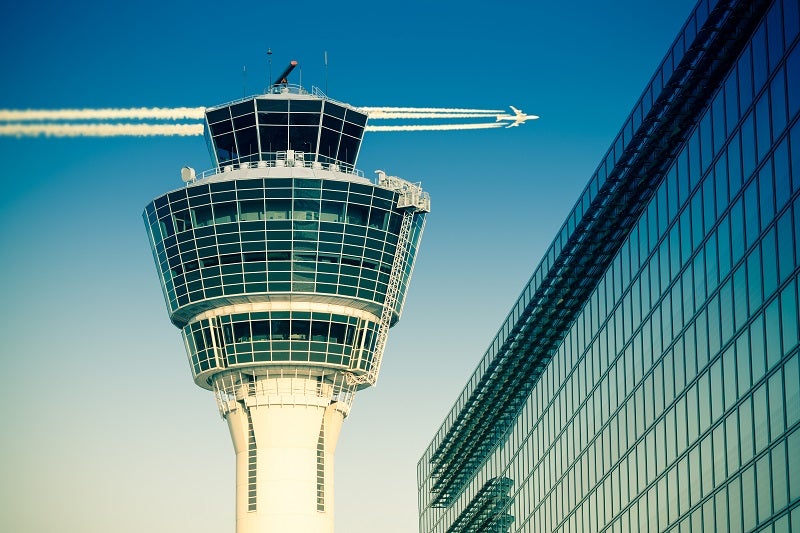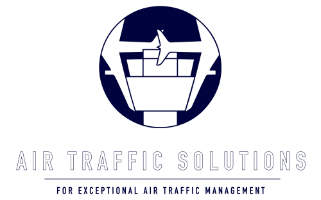
As the aviation and travel industry begins to pick itself back up after the longest shut down in history, Air Traffic Solutions (ATS), an aviation advisory company, has been busy counselling airports, air forces and airlines on the best course of action as the world hits the tarmac again.
ATS founder and MD, Mike Lockwood discusses how airports and the air traffic control industry can get travellers back in the air while keeping staff safe and making sure their travel hub isn’t home to another outbreak.
What’s your take on the impact of recent events on the industry?
It’s a really interesting time. I don’t think we’ve ever seen a shutdown like this before, certainly not so dramatic or for such an extended period. The decrease in traffic levels has been incredible. Even after 9/11, when there was a very sharp dip, the rebound was relatively quick, certainly compared to what’s gone on this time. As we start to build up again, part of the issue is how the air navigation service providers (ANSPs), the airports and the airlines are going to cope with going back to even a semblance of normal operations.
How do you see the reopening working?
It’s going to have to be staggered. One of the big issues for ANSPs and the airports, as well as the rest of the industry, is to safely manage this transition back to normal operations. We’re used to an industry of pilots flying regularly and air traffic controllers operating regularly. But they’ve been operating at almost no traffic levels for three months, maybe longer in some places. Traffic is going to start to increase relatively rapidly. The question is how that can be managed safely from an industry-wide perspective. Aircrews, who haven’t been operating their aircraft for a while, ground staff, air traffic controllers, everyone is going to have to ramp up quite quickly and manage that safely. That’s going to be a big challenge for the industry over the next two to three months, as things pick up.
A key concern will be keeping staff and travellers safe. What will that involve?
It’s certainly one of the biggest issues. A lot of organisations around the world are operating in a team environment, so they don’t mix teams. If one team gets an infection, they can take that team out of the system altogether and bring another team in. It’s a different way from how people have operated in the past.
What the industry needs to do is not only to provide confidence for the travelling public, but also be compliant with its own internal rules for safety management. But now they have to do it all in a non-normal environment, for want of a better term. We need to take account of the added risks inherent in a system where staff aren’t familiar with high traffic loads, because they haven’t seen it for three or four months. We’re all working in an unfamiliar environment. Take as an example, a typical air traffic control system, based on having someone next to you on the console. With social distancing rules, they may not be directly adjacent. It’s a different way of doing business. In an industry where we rely on systems and standards, on a normal way of doing business, it’s a change which has to be managed within organisations and across the sector.
How do you think the air traffic controllers will handle the pressures of this new approach?
As an industry, we’re very resilient. But the whole sector is operating under a lot of financial stress at the moment. A lot of companies have little or no income. There’s a whole range of different things happening in the background, which can impact the safety management of the overall system. All these organisations have systems in place to ensure that they manage risks effectively.
The important thing for the industry is to think about these issues now. Don’t wait until we’re all busy again. People need to be thinking about it now, while they’ve still got a month or so before traffic ramps up, to think about how they’re going to manage these issues, how they’re going to manage any potential increased risk.
How important is it to get the re-open right the first time?
The industry can’t afford to start up and shut down. It needs to be able to start and keep going. We know it’s going to be a number of years before we return to the pre-pandemic levels? To start-up and shut down would be a terrible thing for everyone. We need to use these next four to six weeks to make sure that as an industry we’re prepared for the traffic increases. A lot of good work is happening across industry-wide organisations offering manuals, processes and advice on managing COVID, organisations such as CANSO, IATA and ICAO are doing some good work.
What’s your advice to organisations as they open back up?
I would suggest looking ahead to the next four to six weeks, look at potential risks, look at how you can mitigate those risks and have a plan in place. That way, as the traffic ramps up, it’s a staged approach, so that over three or four months, by the time we actually get back to a reasonable degree of capacity, everyone has an idea of what to expect.
We’ve got a very small window before it will start to get busy. Some of the schedules that are being released in Europe now are looking at 70% of intra-Europe travel. It’s getting busy getting quickly. Especially for short-haul.
There will be hiccups, but organisations also need to have a staffing plan in place. This is the other thing that will be critical. Because of finances, there is pressure to have as few as staff as possible. But you might actually need more staff than normal for this amount of traffic, simply because staff aren’t going to be as efficient initially.
How will airports and air travel change?
It’s going to be huge. I read an article from one of the senior managers b of Heathrow airport where he said if they had to abide by strict social distancing rules they will have a one-kilometre queue in the airport for an A380. And that’s people with a metre and a half between them. While there are lots of businesses thinking individually and different areas are working well, I don’t think anyone’s taking that holistic look at everything. Because of the way that the system’s evolved over the years, it is inherently safe. But there will be new risks. It’s just about identifying the risks, mitigating the risks and managing that, that new way of working.
What’s your key message to the industry for what’s ahead?
The biggest takeaway for the next few months is that airports will have to change. Even people queuing for coffee and then queuing to get through security, there’s just not going to be enough room. Even at the huge airports like Hamada International Airport in Doha; it’s massive, but even there you’re potentially not going to have enough room and you might not going to be able to use the travellators for example, because people are not necessarily going to follow the distancing rules. So, everyone is going to need a lot of patience. And I guess the other thing is there’s a lot of doom and gloom around the industry, but I still think when the ability to travel opens up it will rebound quicker than people think, because inherently, it’s what we like to do.
Any other thoughts?
The financial resilience of the whole industry has been shown to be very poor. There’s going to be a lot of looking at different finance models and new charging models and the way the whole industry operates. Even things like airline passengers sometimes not getting their money back for months, because their money’s already been spent, or tied up in supply chains. The whole industry is going to have a look at that holistically to help rebuild long term confidence. Another thing that will come out of this is that a lot of the government relief or subsidies are being tied to being greener or being more efficient. It’s unfortunately been a harsh way to learn a lesson, but I think that this reset gives us an opportunity to learn from this crisis.


